The Observer Pattern
The Observer Pattern is a behavioral pattern from the book “Design Patterns: Elements of Reusable Object-Oriented Software”. It defines 1-to-n dependencies between objects so that changes to one object cause all dependent objects to be notified.
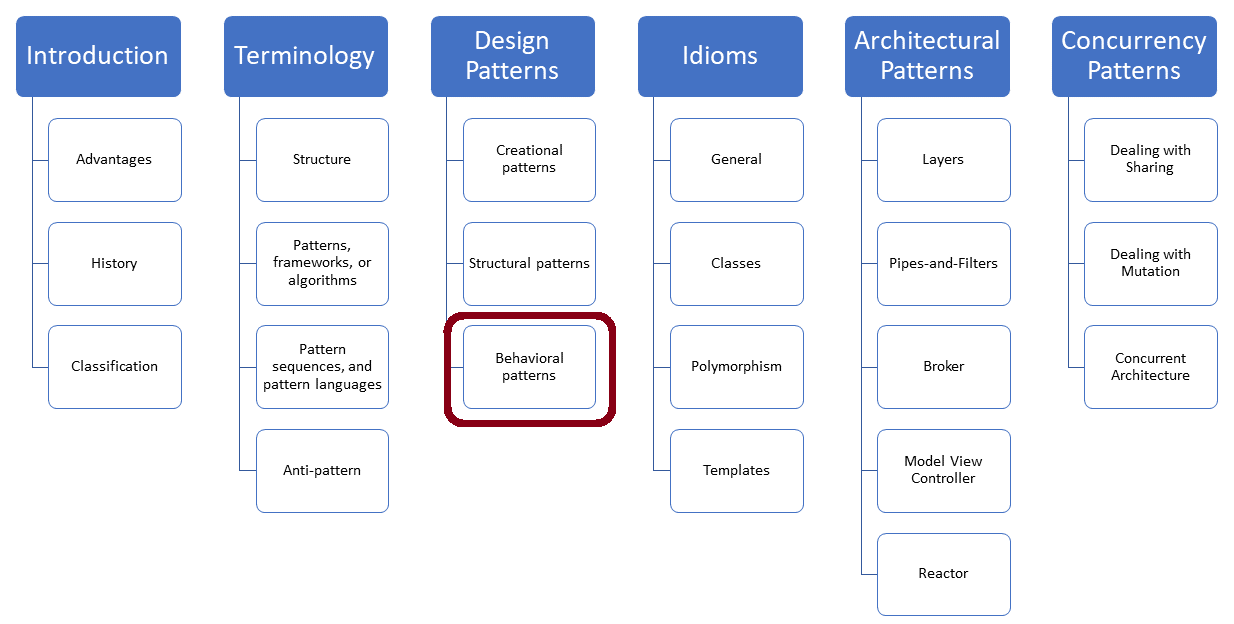
The Observer Pattern solves a classical design issue: How can you ensure that all prospects are automatically notified if an important event has taken place?
The Observer Pattern
Purpose
- Defines 1-to-n dependencies between objects so that changes to one object cause all dependent objects to be notified.
Also known as
- Publisher-Subscriber (short Pub/Sub)
Use Case
- One abstraction depends on the state of another abstraction
- A change to one object implies a change to another object
- Objects should be notified of state changes of another object without being tightly coupled
Structure
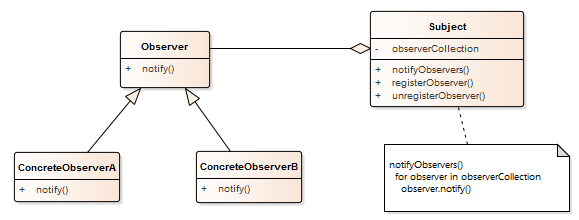
Subject
- Manages its collection of observers
- Allows the observers to register and unregister themself
Observer
Defines an interface to notify the observers
ConcreteObserver
- Implements the interface
- Is notified by the
Subject
Example
The following program observer.cpp directly implements the previous class diagram.
// observer.cpp #include <iostream> #include <list> #include <string> class Observer { public: virtual ~Observer(){}; virtual void notify() const = 0; }; class Subject { public: void registerObserver(Observer* observer) { observers.push_back(observer); } void unregisterObserver(Observer* observer) { observers.remove(observer); } void notifyObservers() const { // (2) for (auto observer: observers) observer->notify(); } private: std::list<Observer *> observers; }; class ConcreteObserverA : public Observer { public: ConcreteObserverA(Subject& subject) : subject_(subject) { subject_.registerObserver(this); } void notify() const override { std::cout << "ConcreteObserverA::notify\n"; } private: Subject& subject_; // (3) }; class ConcreteObserverB : public Observer { public: ConcreteObserverB(Subject& subject) : subject_(subject) { subject_.registerObserver(this); } void notify() const override { std::cout << "ConcreteObserverB::notify\n"; } private: Subject& subject_; // (4) }; int main() { std::cout << '\n';
Subject subject; ConcreteObserverA observerA(subject); ConcreteObserverB observerB(subject); subject.notifyObservers(); std::cout << " subject.unregisterObserver(observerA)\n"; subject.unregisterObserver(&observerA); // (1) subject.notifyObservers();
std::cout << '\n'; }
 Modernes C++ Mentoring
Modernes C++ Mentoring
Do you want to stay informed: Subscribe.
The Observer supports the member function notify, and the Subject supports the member functions registerObserver, unregisterObserver, and notifyObservers. The concrete observers receive the subject in their constructor and use them to register themself for the notification. They have a reference to the subject (lines 3 and 4). Only observerA is unregistered in line (1). The member function notifyObservers goes through all registered observers and notifies them (line 2).
The following screenshot shows the output of the program:
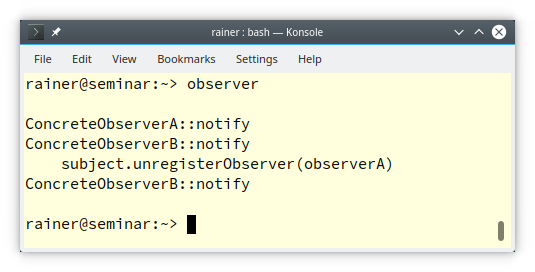
By the way, you may have noticed that I used no memory allocation in the previous program observer.cpp. This is how virtuality is typically used if you aren’t allowed to allocate memory, such as in deeply embedded systems. Here is the corresponding main function using memory allocation:
int main() {
std::cout << '\n'; Subject* subject = new Subject; Observer* observerA = new ConcreteObserverA(*subject); Observer* observerB = new ConcreteObserverB(*subject); subject->notifyObservers(); std::cout << " subject->unregisterObserver(observerA)" << "\n"; subject->unregisterObserver(observerA); subject->notifyObservers(); delete observerA; delete observerB; delete subject;
std::cout << '\n'; }
Know Uses
The Observer Patten is often used in architectural patterns such as Model-View-Controller (MVC) for graphical user interfaces or Reactor for event handling.
- Model-View-Controller: The model represents the data and its logic. The model notifies its dependent component, such as the views. The views are responsible for representing the data, and the controller is for the user input.
- Reactor: The Reactor registers the event handlers. The synchronous event demultiplexer (
select) notifies the handles if an event occurs.
I will dedicate an entire future post to both architectural patterns.
Variations
The Subject in the program observer.cpp simply sends a notification. However, more advanced workflows are often implemented:
The Subject sends a
- value.
- notification that a value is available. Afterward, the Observer has to pick it up.
- notification, including an indication of which value is available. The Observer picks it up if necessary.
Related Patterns
- The Mediator Pattern establishes communication between the sender and the receiver. Each communication between the two endpoints goes, therefore, through the mediator. The Mediator and the Observer are pretty similar. The goal of the mediator is to decouple the sender and the receiver. On the contrary, the Observer established a one-way communication between the publisher and the subscriber.
Pros and Cons
Pros
- New observers (subscribes) can easily be added to the publisher
- Observers can register and unregister themself at run time
Cons
- Neither does the publisher provides a guarantee in which order the subscribers are notified, nor does it gives the assertion of how long the notification takes when you have many subscribers.
- The publisher may send a notification, but a subscriber is not alive anymore. To avoid this drawback, you can implement the destructor of the concrete observers in such a way that the concrete observers unregister themself in its destructor:
class ConcreteObserverA : public Observer { public: ConcreteObserverA(Subject& subject) : subject_(subject) { subject_.registerObserver(this); } ~ConcreteObserverA() noexcept { subject_.unregisterObserver(this); } void notify() const override { std::cout << "ConcreteObserverA::notify\n"; } private: Subject& subject_; };
The concrete observer ConcreteObserverA models the RAII Idiom: It registers itself in its constructor and unregisters itself in its destructor.
What’s next?
The Visitor Pattern has an ambivalent reputation. On one hand, enables the Visitor Double Dispatch. On the other hand, the Visitor is pretty complicated to implement. Let me introduce the Visitor Pattern in my next post.
Thanks a lot to my Patreon Supporters: Matt Braun, Roman Postanciuc, Tobias Zindl, G Prvulovic, Reinhold Dröge, Abernitzke, Frank Grimm, Sakib, Broeserl, António Pina, Sergey Agafyin, Андрей Бурмистров, Jake, GS, Lawton Shoemake, Jozo Leko, John Breland, Venkat Nandam, Jose Francisco, Douglas Tinkham, Kuchlong Kuchlong, Robert Blanch, Truels Wissneth, Mario Luoni, Friedrich Huber, lennonli, Pramod Tikare Muralidhara, Peter Ware, Daniel Hufschläger, Alessandro Pezzato, Bob Perry, Satish Vangipuram, Andi Ireland, Richard Ohnemus, Michael Dunsky, Leo Goodstadt, John Wiederhirn, Yacob Cohen-Arazi, Florian Tischler, Robin Furness, Michael Young, Holger Detering, Bernd Mühlhaus, Stephen Kelley, Kyle Dean, Tusar Palauri, Juan Dent, George Liao, Daniel Ceperley, Jon T Hess, Stephen Totten, Wolfgang Fütterer, Matthias Grün, Ben Atakora, Ann Shatoff, Rob North, Bhavith C Achar, Marco Parri Empoli, Philipp Lenk, Charles-Jianye Chen, Keith Jeffery, Matt Godbolt, Honey Sukesan, bruce_lee_wayne, Silviu Ardelean, schnapper79, Seeker, and Sundareswaran Senthilvel.
Thanks, in particular, to Jon Hess, Lakshman, Christian Wittenhorst, Sherhy Pyton, Dendi Suhubdy, Sudhakar Belagurusamy, Richard Sargeant, Rusty Fleming, John Nebel, Mipko, Alicja Kaminska, Slavko Radman, and David Poole.
| My special thanks to Embarcadero |  |
| My special thanks to PVS-Studio |  |
| My special thanks to Tipi.build |  |
| My special thanks to Take Up Code |  |
| My special thanks to SHAVEDYAKS |  |
Modernes C++ GmbH
Modernes C++ Mentoring (English)
Rainer Grimm
Yalovastraße 20
72108 Rottenburg
Mail: schulung@ModernesCpp.de
Mentoring: www.ModernesCpp.org


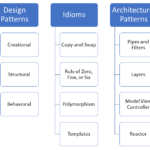
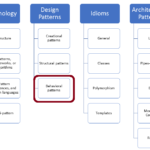
Leave a Reply
Want to join the discussion?Feel free to contribute!